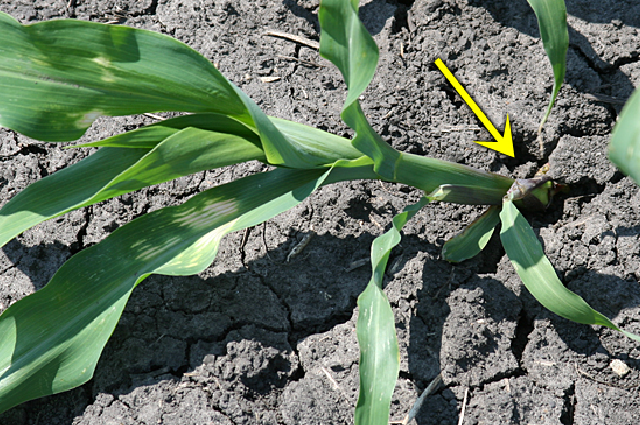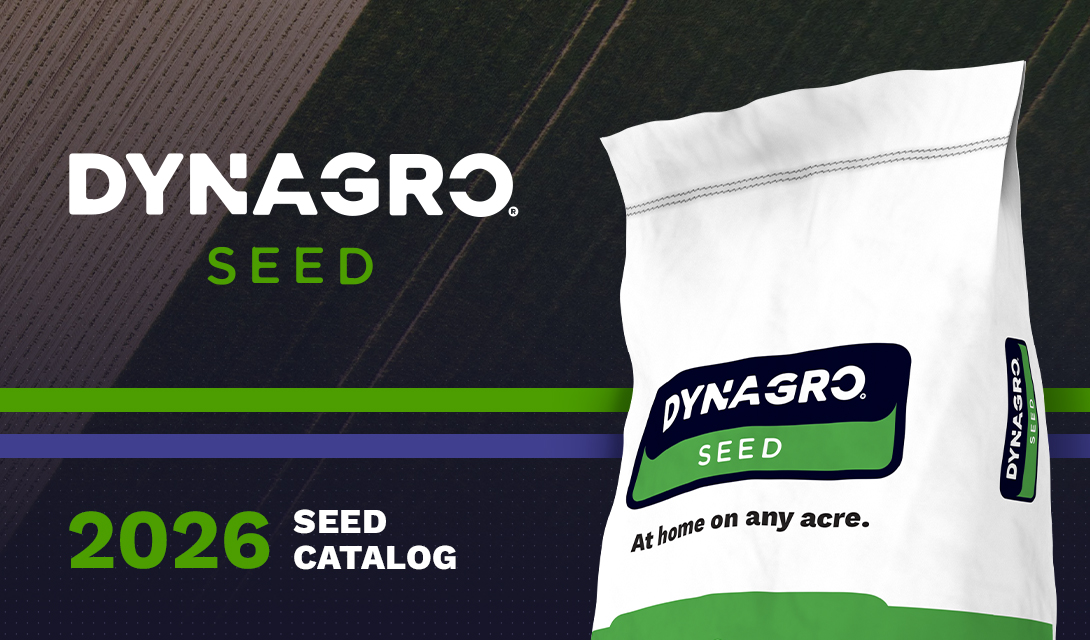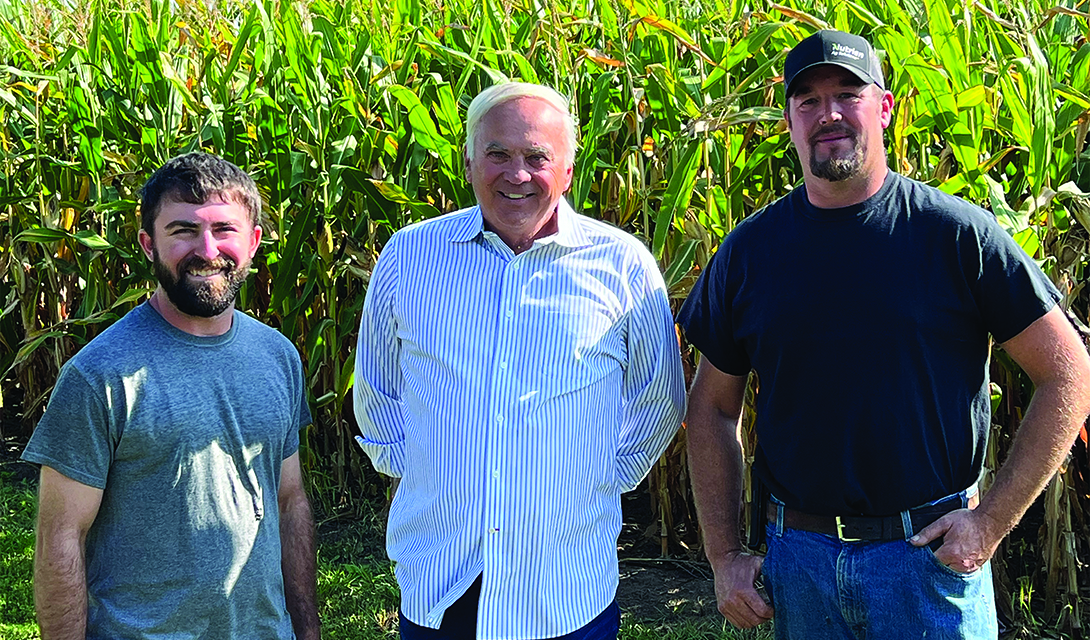Rootless Corn Syndrome
“Rootless or Floppy Corn Syndrome” describes an environmental/cultural problem where the corn rooting node is exposed or located in hot or dry soil. It is easier to prevent than to cure.
“Rootless Corn Syndrome” is a term describing a situation where the nodal or primary roots of the corn seedling fail to grow and penetrate the soil. Affected plants often flop in the wind and fail to develop properly. With the failure to develop a nodal root system, the plants must feed off the seed, or seminal, roots. The mesocotyl, which is the pipeline between the seed and the rooting node, will sometimes break and the seedling corn plant then dies.
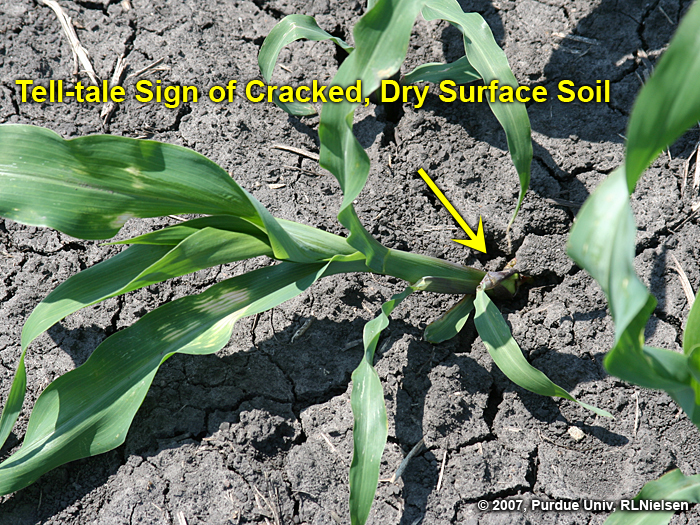
Two cultural or environmental conditions commonly contribute to this problem.
Shallow planting is by far the most common. A related situation occurs when corn is planted into a loose seedbed and the soil later settles around the corn seedling, exposing the rooting node. The same thing can happen in a no-till seedbed where the corn emerges through crop residue and the crop residue later settles. Open seed slots resulting from no-till planting "on the wet side" can contribute to the desiccation and death of initial nodal root development if the initial nodal roots desiccate before they successfully penetrate through the furrow sidewalls.
The second situation occurs when the soil becomes hot and dry before the nodal roots have a chance to emerge. Nodal roots simply will not penetrate a hot or dry soil. A similar problem occurs in no-till when the planter furrow opener smears the soil along the side of the seed furrow. The smeared soil presents a physical barrier to penetration by nodal roots. The nodal roots are the most important to the corn plant because they are the ones that absorb most of the water and nutrients during the plant’s life.
Weather conditions this spring may predispose us to incidents of rootless corn. Soil moisture quickly went from very wet to very dry in some fields and soil temperatures rose rapidly as fields dried out. The delays in planting caused some growers to hurry seedbed preparation and planting. One bright spot is that most growers seemed to be planting deep enough to allow the corn rooting node to develop at 1⁄2 to 3⁄4 inch deep, a normal depth. If timely rainfall occurs, the incidence of rootless corn may be low this year.
If rootless corn appears in some fields this year, the only remedy is to attempt to cultivate and move some soil around the base of the corn plants before they fall over. This provides additional support for the plant and provides a better environment for nodal roots to extend into the soil. If the rooting nodes of the plants are not completely exposed, timely rainfall will help. Our experience has been that rootless or floppy corn rarely affects large areas of fields.
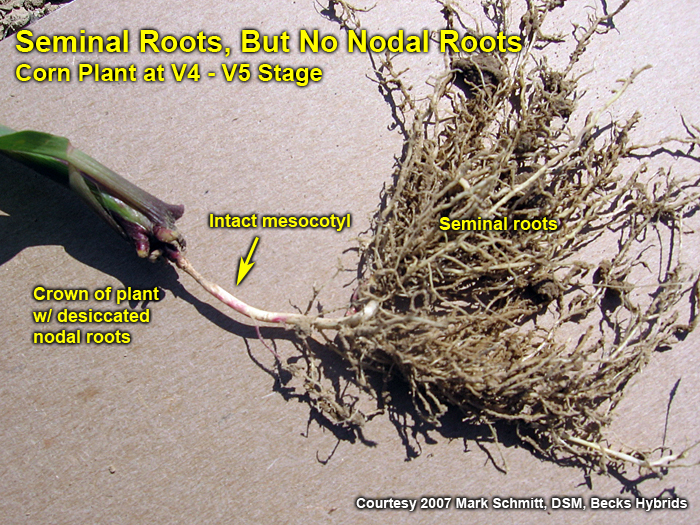
© Copyright 2012. This information may have been accumulated from publicly available sources outside of Dyna-Gro Seed, or its affiliates. Individual results may vary, and performance may vary from location to location and from year to year. This result may not be an indicator of results you may obtain as local growing, soil and weather conditions may vary. Dyna-Gro® is a registered trademark of Loveland Products, Inc. Featured logos are service/trademarks of their respective owners.
